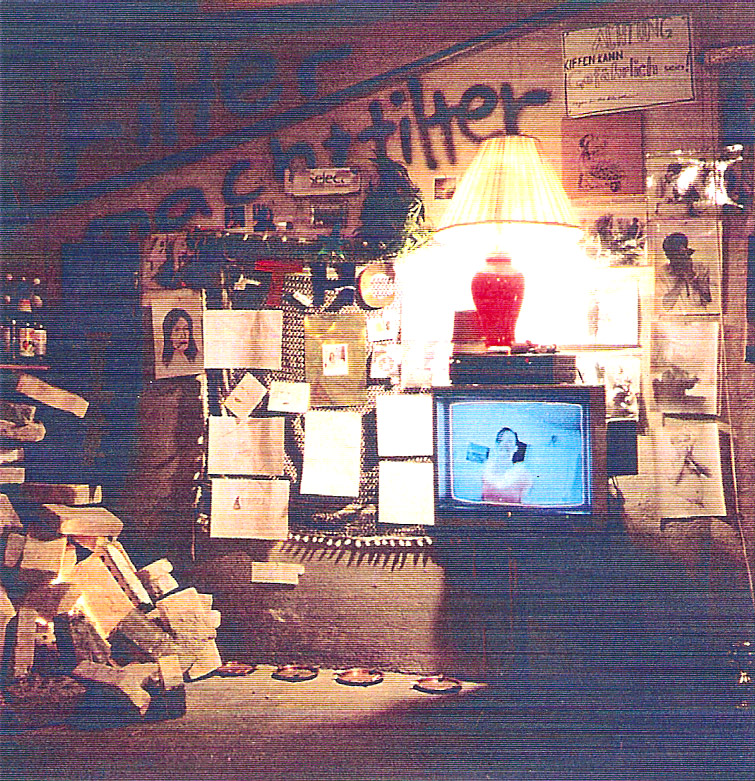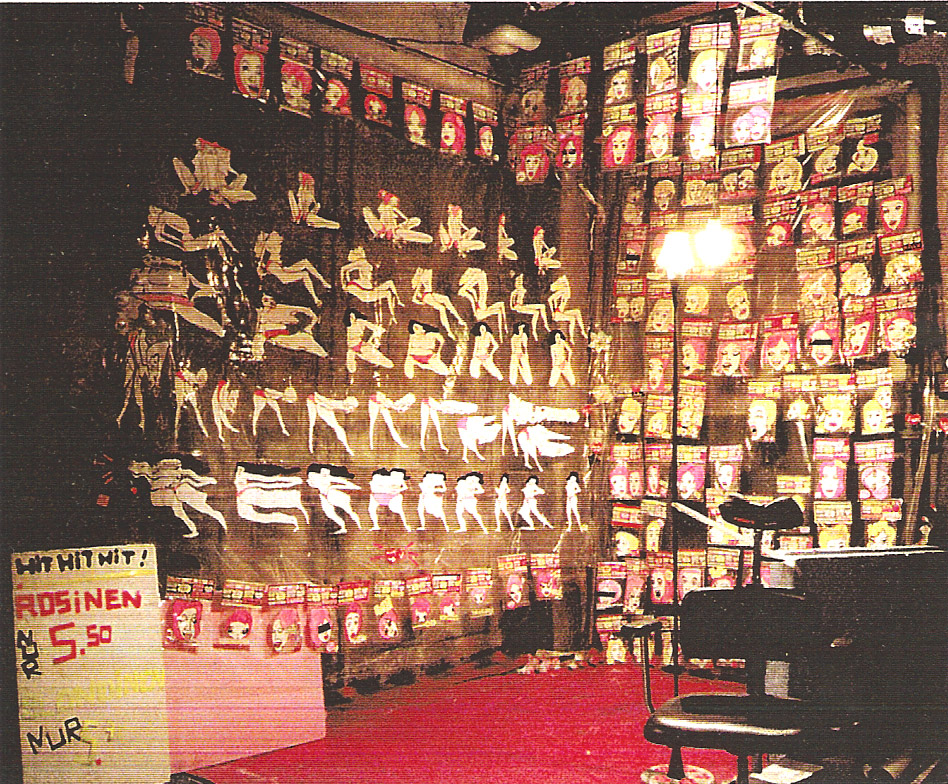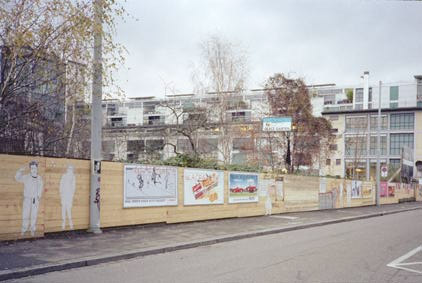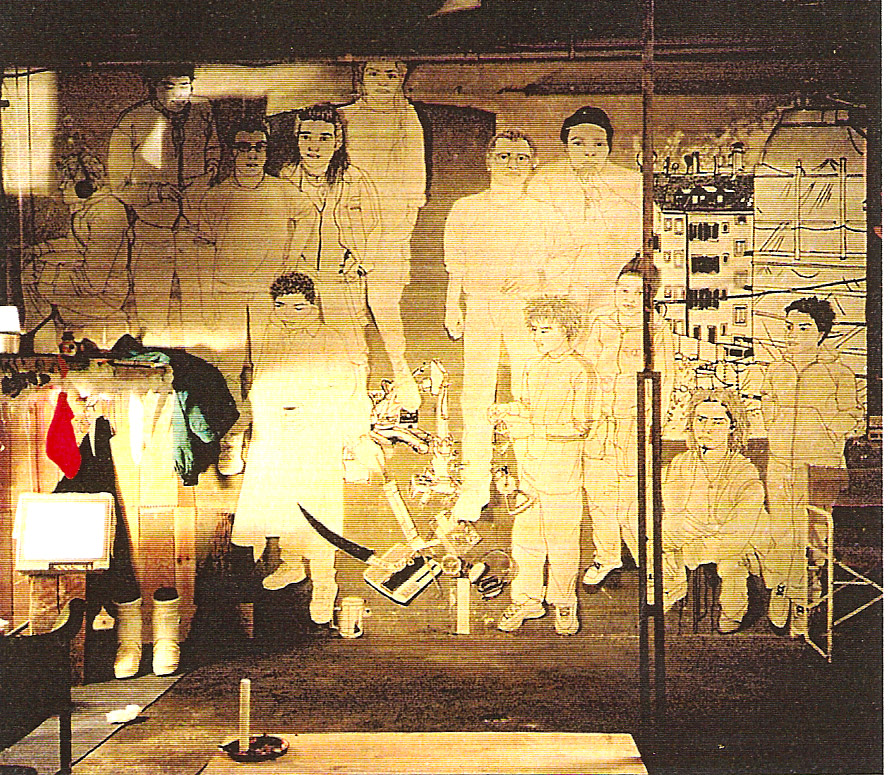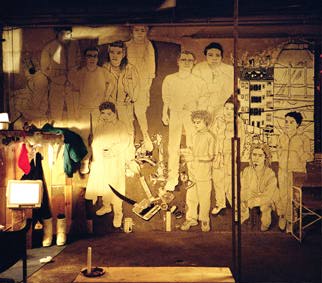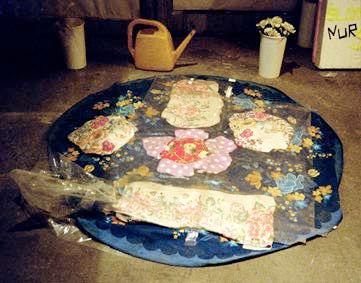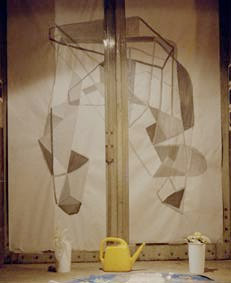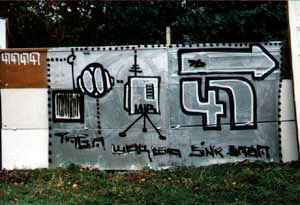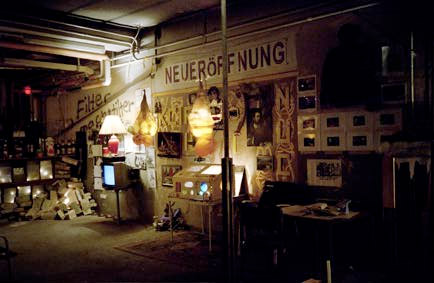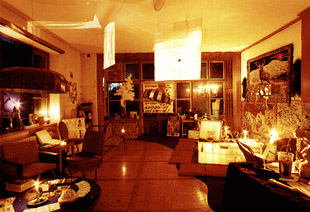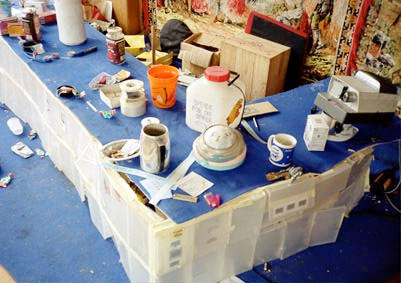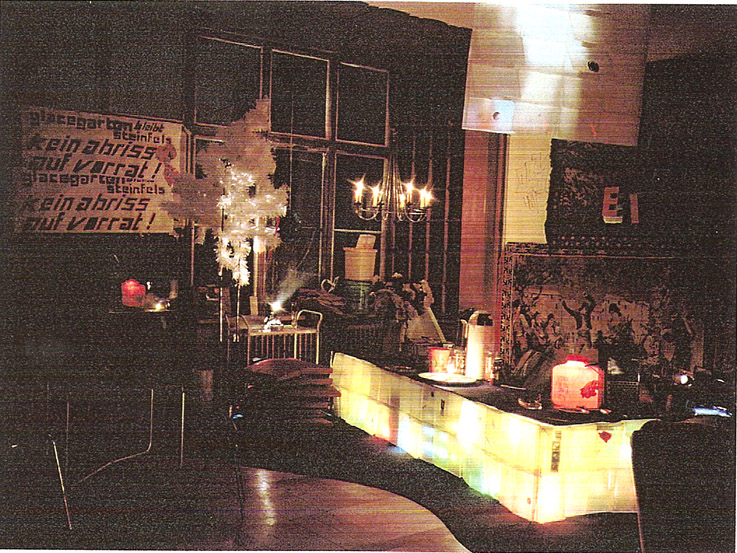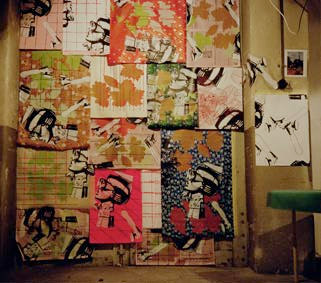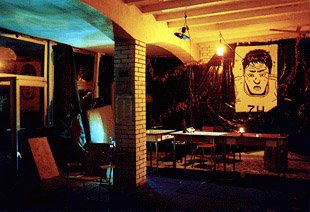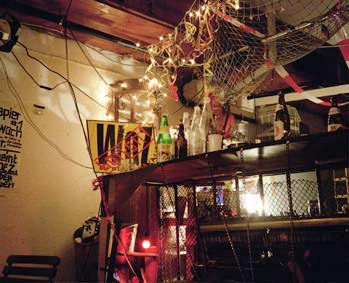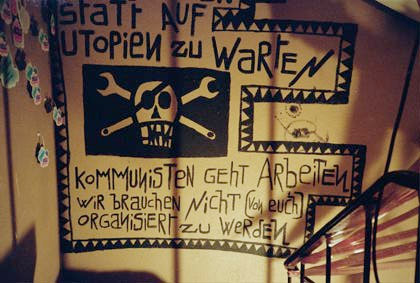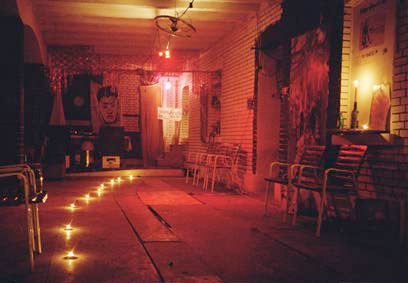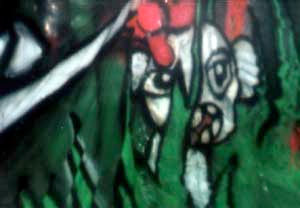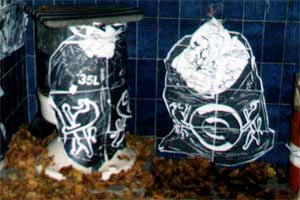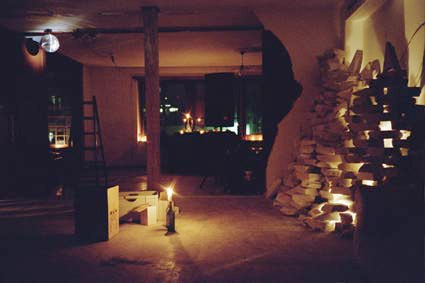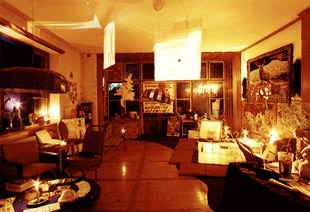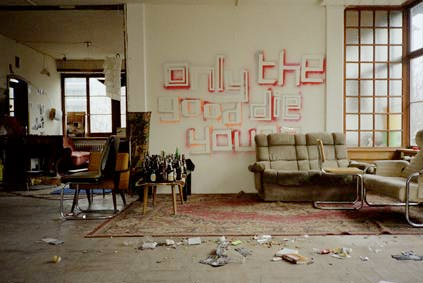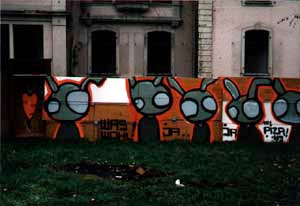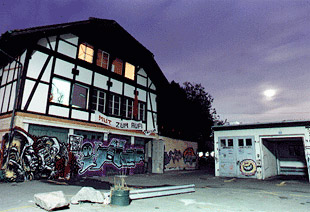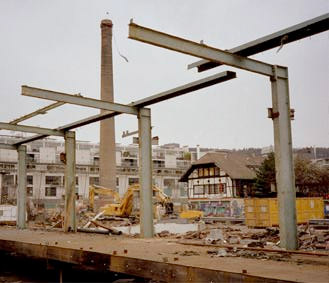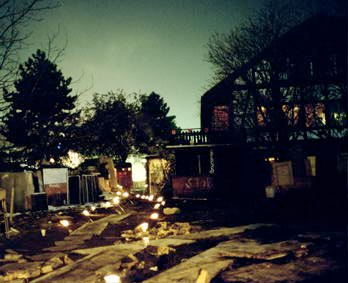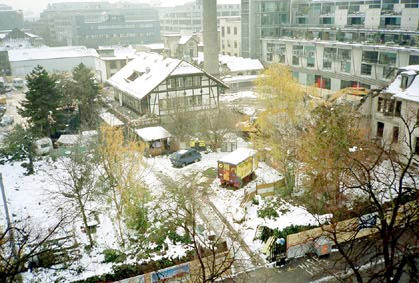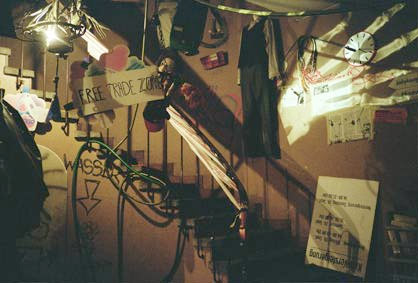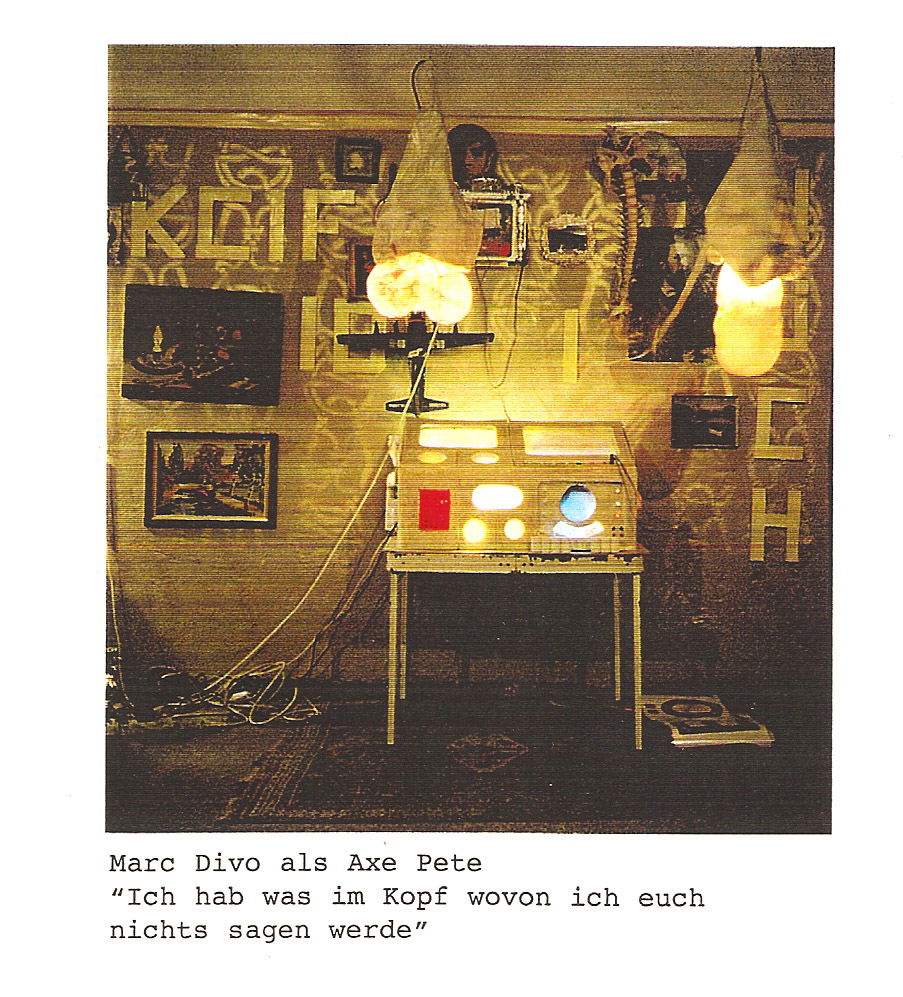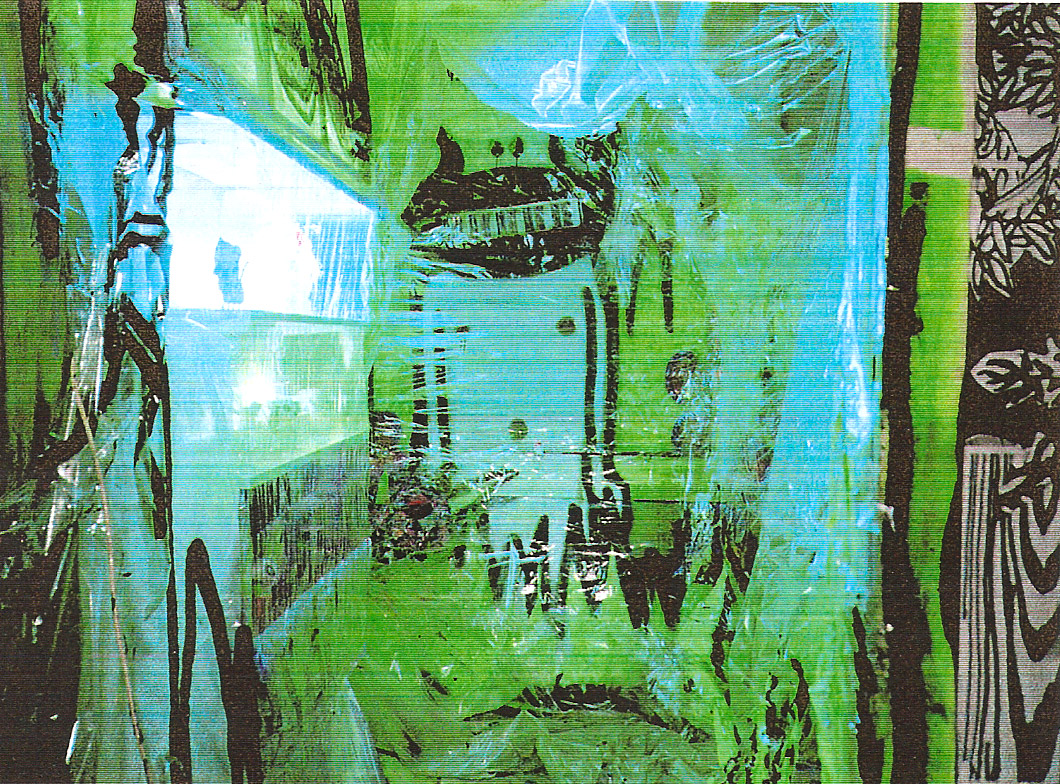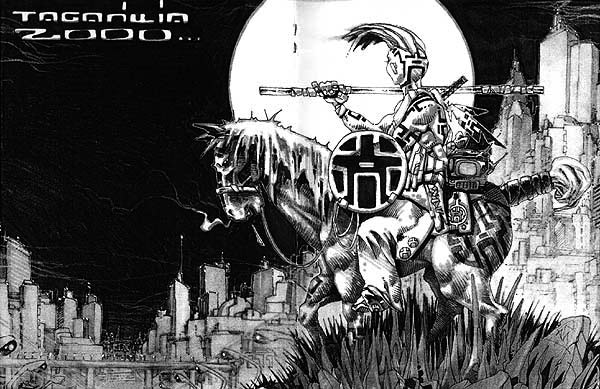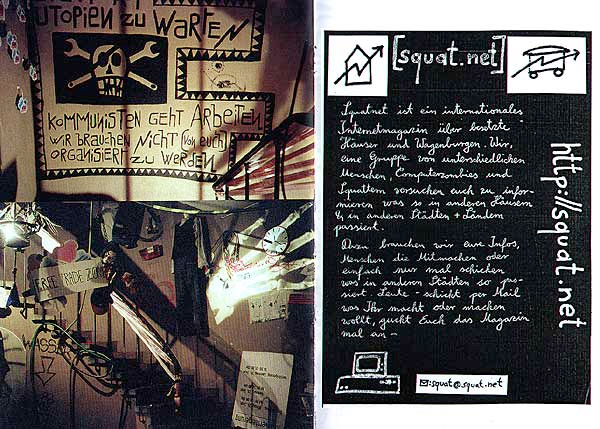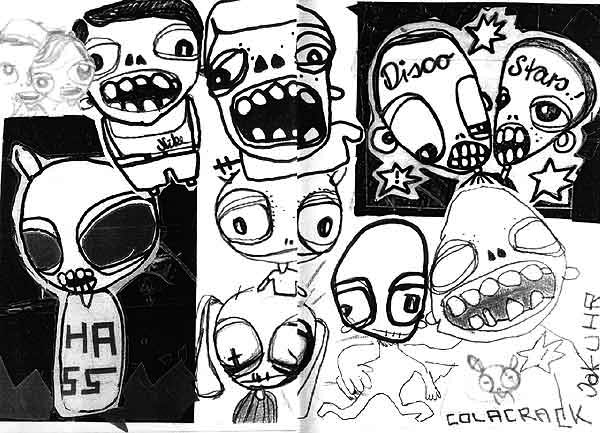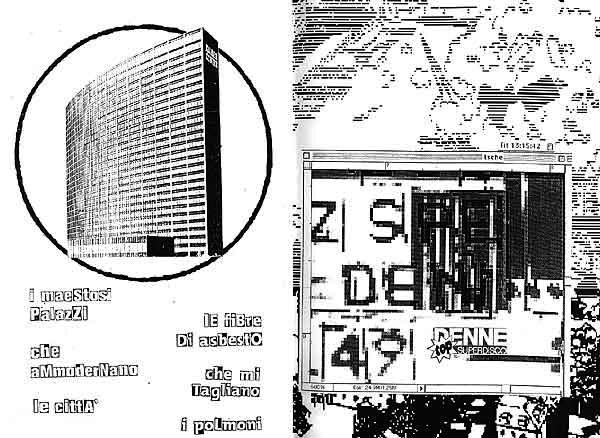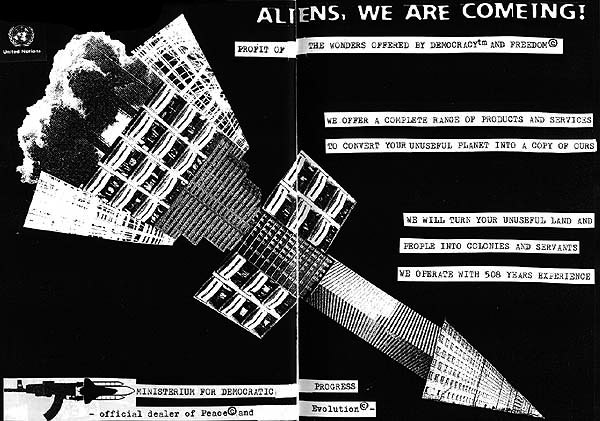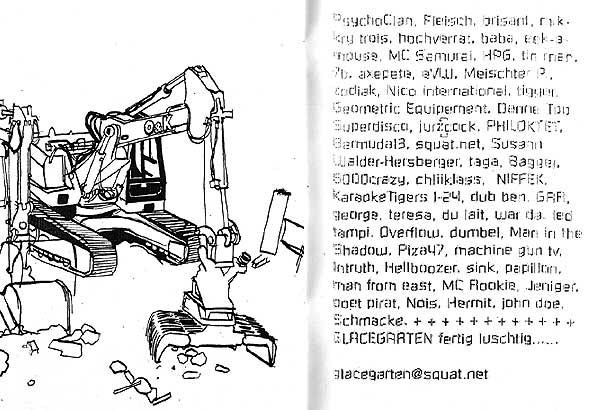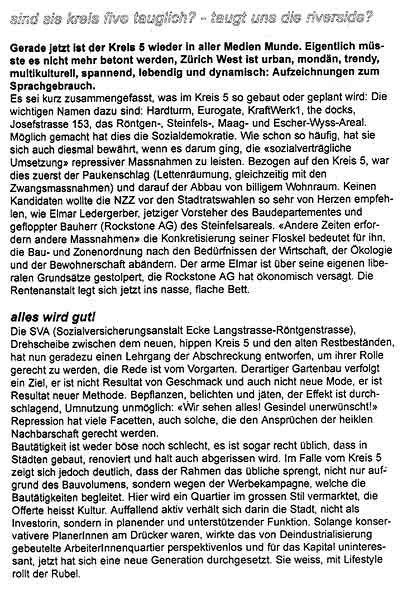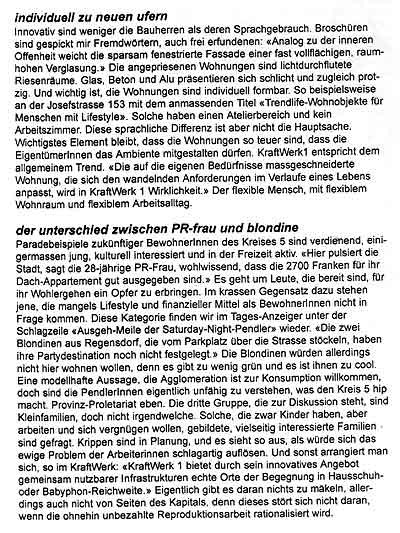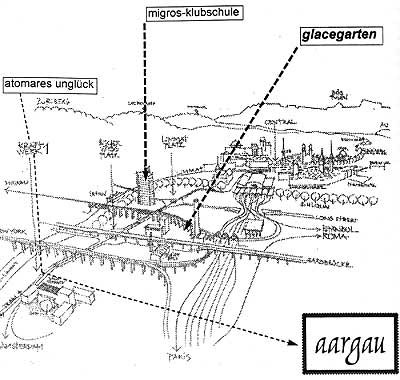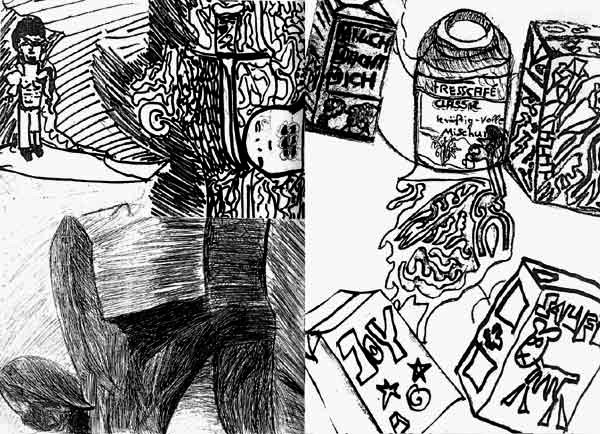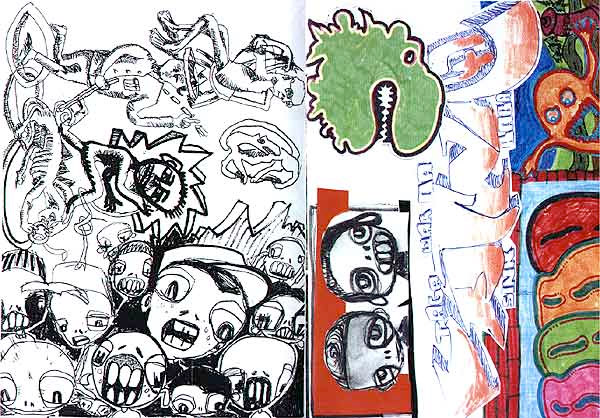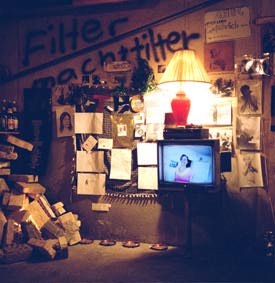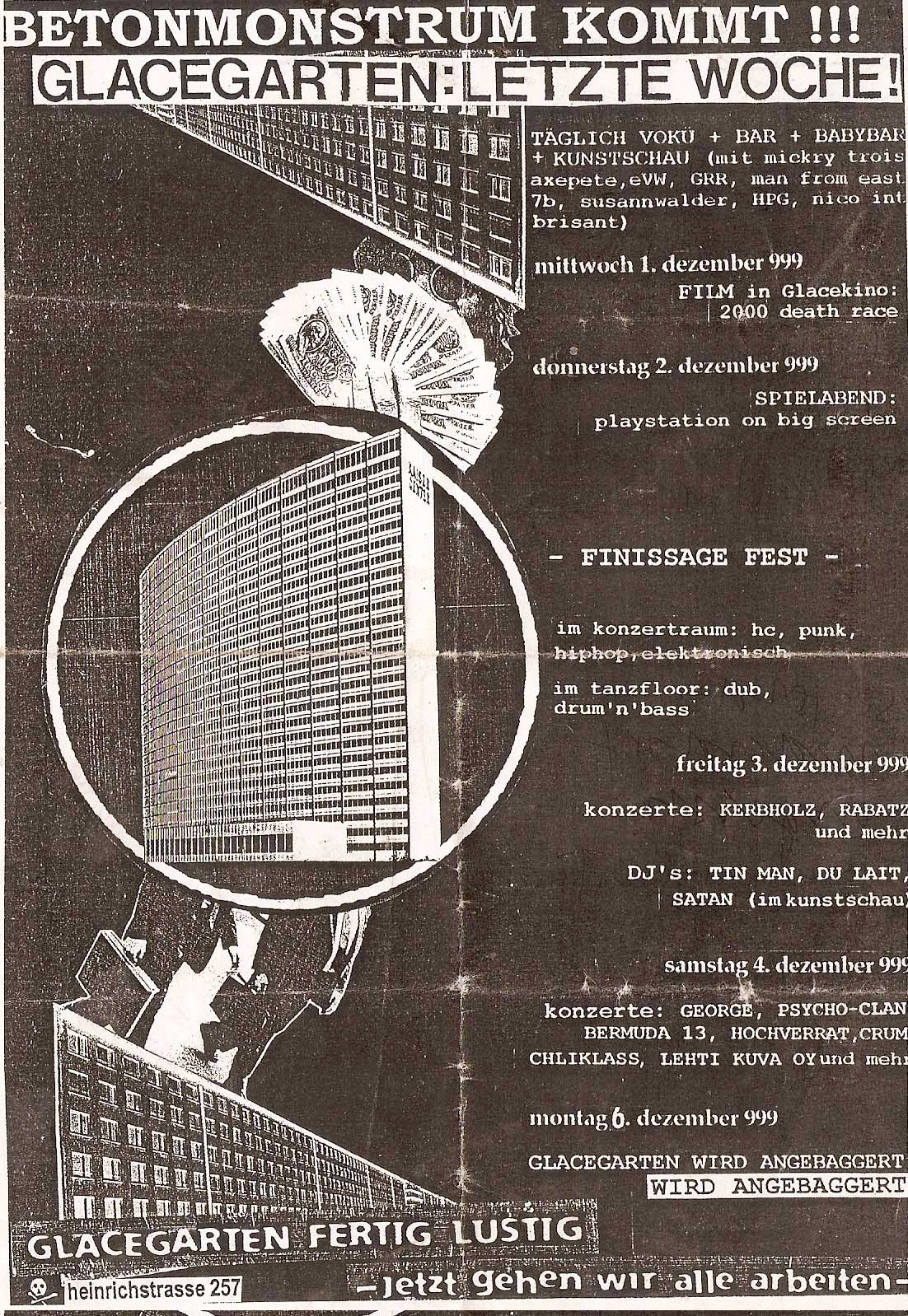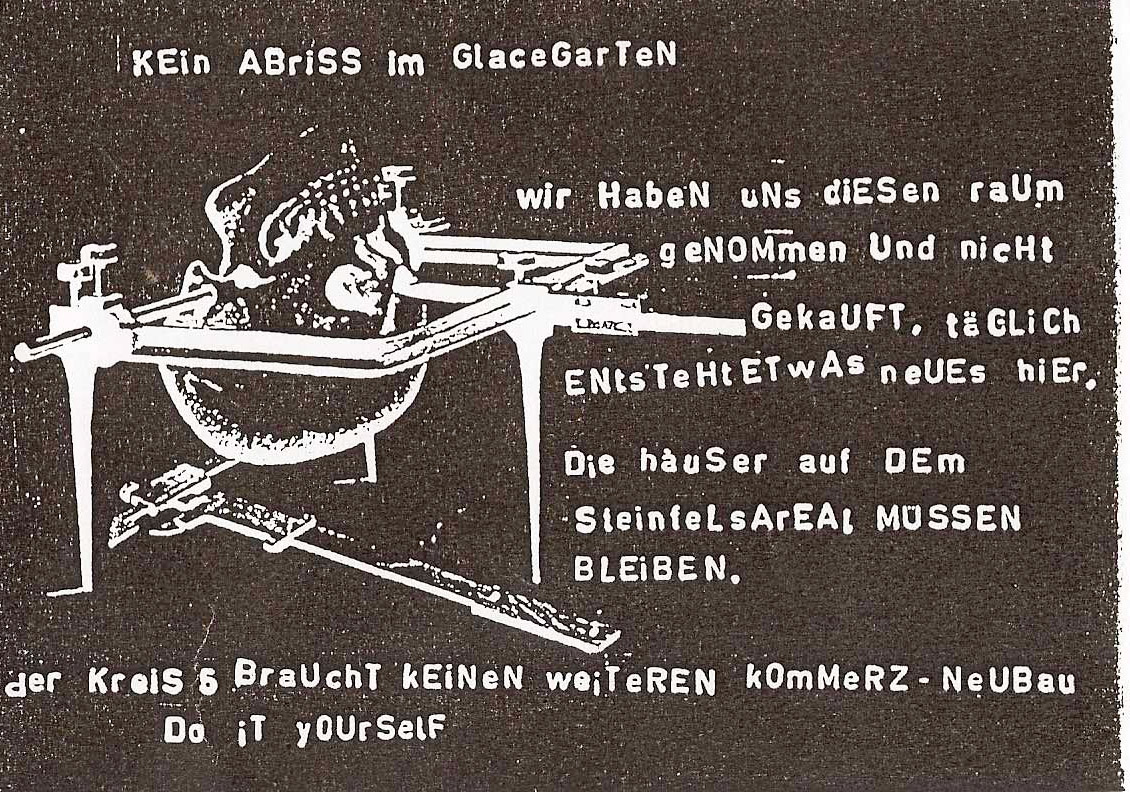The Glacegarten
At the end of 1998 I returned to Zurich after spending two and a half years traveling abroad. The city was dull, there was nothing going on. The hype surrounding my first museum exhibition “A ClearView of the Mediterranean” in the Kunsthaus Zurich had died down. New protagonists of the art scene were in place and being passed around, the techno scene entered a symbiosis with the commerce, and protesters were sitting in their centrally heated villas running vegan soup kitchens. During my nightly walks through the desolate town I couldn’t help noticing omnipresent colorful stickers with whimsical images of animals. The stickers were everywhere, glued to lampposts, traffic lights and tram stops. On closer inspection I realized that all the subjects were hand-drawn. I often wondered who the artist was who covered the city with these unique works of art. As everyone knows, Zurich is a village, so I was sure that I would eventually bump into the creator of these one-off signature pieces.Since the squatting of the Wohlgroth factory there had been no other culturally initiated squatting going on in Zurich, and all attempts to take over a building had failed. In late autumn of ’99 I rounded up a few activists and moved into the empty canteen of the Steinfels AG in the Heinrichstrasse. The object was situated on the future site of a Cinemax, and all around us diggers had begun tearing down the old factory. We managed to convince the owners to have the canteen demolished last, and so we had a blast for five weeks, while the wrecking balls were crashing into the walls around us. During this interim cultural use the Glacegarten hosted a multitude of events on weekends.
The curious stormed the doors. For our illegal activities we received a lot of encouragement from a broad section of culture enthusiasts and realized that there was a high demand for spaces providing non-commercial events in Zurich.
Again I saw the colorful stickers with the distinctive streak, this time in our toilets. Later that night DJ John Player told me at the bar that he knew who created these works and offered to introduce me. The next day we visited Mickry 3 in their studio. The three artists worked in a hut cobbled together from roofing tiles and tarpaulin, hidden in the far away corner of an unheated warehouse. In this makeshift shack we drank tea together and they showed me the first pieces of their supermarket collection. The large and small hand-drawn characters were neatly sealed in plastic foil and laid out on table tops. There were several variations of each character, and each was assigned to a particular supermarket department. Dominique told me that they had already spent a year working on this mammoth installation and it would take another two years until all product lines were completed. The concept was simple, intuitive, whereas the jazzy, sassy implementation of the idea would set collectors’ hearts racing. The three ladies impressed me so much that I decided to invite them to our next event in two weeks, a collective exhibition in the Glacégarten.
The little art show curated by Ingo Giezendanner and myself would prove a tremendous success. We managed to attract lots of collectors and art enthusiasts. This exhibition was highlighted by Mickry 3’s installation, them hawking a hundred blondes and raisins sealed in plastic at the fabulous bargain price of six francs fifty. By the end of the night they had sold out.
Participant artists
Artists: Eva von Wartburg (CH), Ingo Giezendanner (CH), Mark Divo (CH), Susan Walder (CH), Teresa Perreira (CH), Marcel Kühne (CH), Mickry 3 (CH), Brisant (CH)
LOCATION
Heinrichstrasse 247, 8005-Zürich
BUILDING TYPE
Former canteen of Steinfels AG
SIZE
Ground floor 200 m²
First floor 150 m²
PROMOTION
None
INFRASTRUCTURE
Exhibition space, concert stage, bar, inhabited sculpture, disko, tea-room in the first floor
EVENTS
Concerts, performances, readings
Free services: Flea market, people’s kitchen
CONCEPT AND ORGANISATION
Collective
